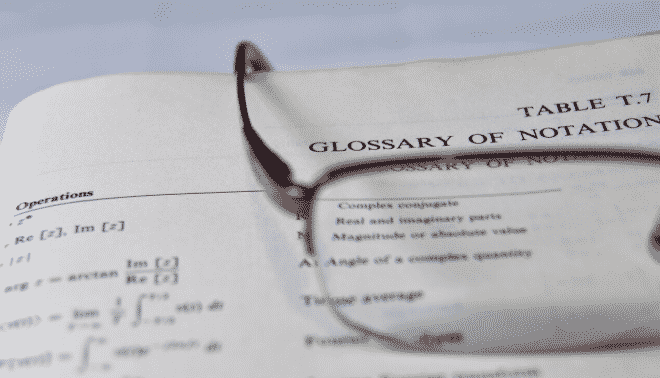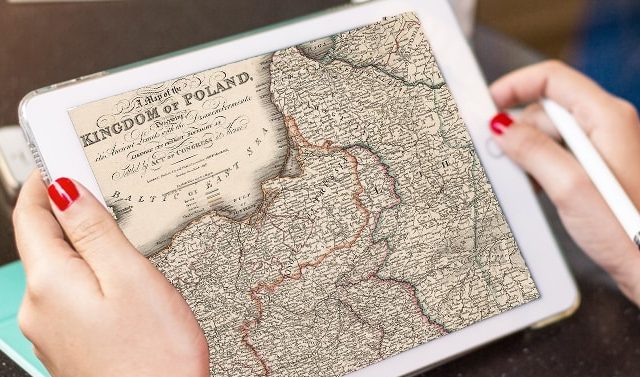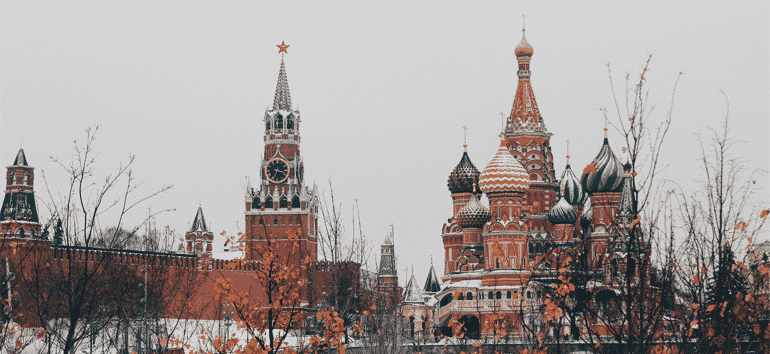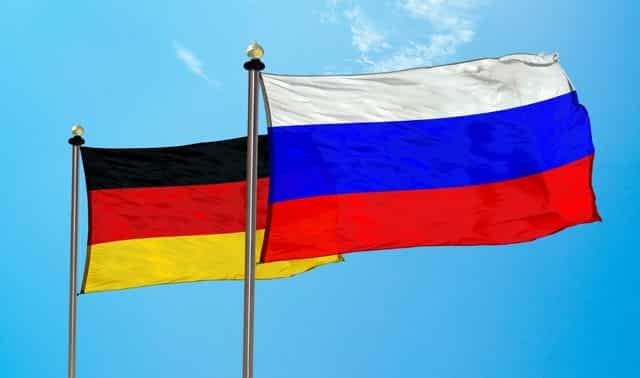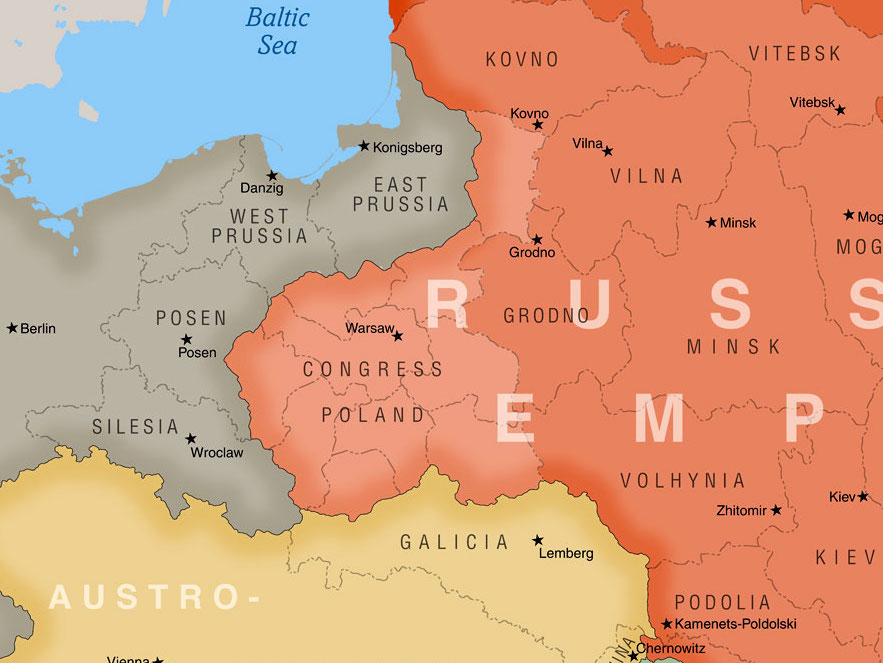
They say genealogy is a journey, not a sprint. But for those of us trying to trace ancestors back to Central and Eastern Europe, the journey seems to cover unpaved, bumpy terrain with endless obstacles and brick walls.
As a person with ancestors from several Eastern European countries, I can tell you: The hurdles are real. But they’re not insurmountable. You can overcome name changes, migrating places and language barriers.
I’ll share six of the most common obstacles to discovering your roots in Poland, Slovakia, Hungary and other countries of Eastern Europe—and more importantly, how to get past these brick walls and cross the family history finish line.
1. Finding your ancestor’s name
Eastern European names are complex and downright challenging. It could be you don’t have a consistent or correct spelling. Or you might have the right name, but can’t seem to find it in an index. Name stumpers can be the result of an unfamiliar language, accent and handwriting; name changes; or the use of nicknames. As for immigrant ancestors from other places, the name that North American records call your Eastern European ancestors may or may not be the name he or she used back home. Use these strategies to help determine your immigrant ancestor’s original name and how it might appear in US records:
Consider phonetics and alphabets
Your ancestor’s native language—whether Polish, Czech, Slovak, Latin, Hungarian, German or Russian—plays an important role when deciphering names. The Polish, Czech and Slovak languages have letters not in the English alphabet, and their pronunciations can trip up English speakers. This might result in an incorrectly transcribed name that stymies your searches in genealogical indexes and databases. For example, the Polish letter Ł (and the lowercase ł) is pronounced like an English W. It may be transcribed as an L in English, or the ł may be transcribed as the similar-looking t. Similarly, the Polish ą is pronounced ahn but often is transcribed as an a in English.
A helpful read is “Mutilation: The Fate of Eastern European Names in America” by William F. Hoffman (available as a PDF download). It discusses how phonetics impacted Czech, German, Polish, Slovak and Russian names when translated or pronounced in English. Also look up surnames and given names on Behind the Name for variants by country. Look for more surname clues at the Guild of One-Name Studies and Eastern European-focused sites such as Moikrewni.pl and KdeJsme.
Try alternate Soundex systems
Many indexes that genealogists search use the Russell Soundex system to find records with variant surname spellings. That includes census and passenger list indexes. But if a website you’re searching gives you the option, try alternative Soundex schemes such as Daitch-Mokotoff, which is designed to better handle Eastern European surnames.
Look for nicknames, middle names and native first names from the home country
Your Uncle Bill or Aunt Stella may have been born Bołesław or Stanisława. A person named Ludwig might be called Louis, Lewis or Lou in records—or all of the above. Try searching the web for the name and words like Polish (or Czech or Slovak) nicknames or diminutives. For example, this page shows Polish given names, common nicknames and English equivalents.
Familiarize yourself with the script used in records from the time
This will help you understand how handwriting could affect the way a name was transcribed. Look at the letters in other, easier-to-interpret names. Does a handwritten P resemble an F? Does a J look like a Y? This will help you find variations to try when searching databases and print records.
Make a timeline
Variant name spellings can make it hard to tell if a record is for your ancestor. How do you know you’ve found the right Jakub Novotný? Make a timeline of all you’ve learned about him, so it’s easier to see if his location at a given time matches a new record you’ve found. You can do this on paper, in your genealogy software or online tree, or with a utility such as Twile. You also can use your ancestor’s family members to “anchor” him. Look for names of his parents, siblings, spouse or children in records with him—especially if one of them had an uncommon name. For instance, Jakub’s sister Bohumila will be easier to ID in records, and you’ll know you have the right family when you find the two names together.
Surnames may be wrong, but DNA doesn’t lie
A Y-DNA test can show when two same-named men are related, and estimate the number of generations back to their most recent common ancestor. Family Tree DNA is the only major testing company offering Y-DNA tests; check its website for surname studies. Those with Czech roots will want to read about the Czech American DNA study at the Czechoslovak Genealogical Society International’s website, which has a listing of surnames that have participated in the study. More on DNA ethnicity estimates below.
2. Determining place of origin
Determining an immigrant ancestor’s town or village of origin is critical to your research success once you cross the ocean. Orienting yourself to the geographic area of research is always essential to genealogy, but probably even more so for those with Eastern European ancestors because of the area’s complex history and shifting borders. The homeland of your ancestors was most likely a multicultural society, evidenced by the number of languages in which records are written.
Why would a place name be recorded incorrectly?
Just as with surnames, American record-keepers didn’t usually change Eastern European place names intentionally. “Most immigrants were illiterate,” Hoffman writes, “and probably didn’t have a clue what powiat or kreis or uyezd they had lived in.” Those Polish and German terms are administrative subdivisions comparable to counties and districts. “If, somewhere along the line an official made a mistake copying this information on a form, they couldn’t correct him.”
Hoffman adds that some immigrants left to avoid military conscription, debt or criminal charges; they might cover their tracks by giving vague or incorrect information about their origins. A lack of familiarity with Eastern European geography also contributed to distorted place names being passed down to modern researchers in family papers, on passenger lists and passports, and in vital records.
To sort out perplexing place names, tap into tools such as maps, atlases and gazetteers (geographical dictionaries that list places alphabetically, with descriptions of administrative divisions, population statistics and other information).
Try advanced search options
In the JewishGen Communities database and gazetteer, do sounds-like and partial-word searches if you don’t know the spelling. You can search all Eastern European countries, or by specific country. For each locality, the search results will display the place’s name(s) over time and in different languages, with the native name in bold. This tool can help you locate Eastern European towns whether or not you have Jewish roots. But it’s not always 100 percent reliable for determining alternate place names. You may discover that some alternate forms of a town or village name are missing.
View maps from the time period
It helps to view digitized maps published around the time your ancestors lived in an area using the David Rumsey map collection, Foundation for East European Family History Studies Map Library, and Topographic Maps of Eastern Europe. Check for print or microfilm maps at large genealogical libraries such as the Allen County (Ind.) Public Library and the Family History Library in Salt Lake City. To learn the county and district, main parish churches and religious makeup of the population, look up places in online gazetteers. Two that Eastern European genealogists commonly use are the 1877 Dvorsák Gazetteer of Hungary and the Słownik Geograficzny Krolestwa Polskiego (Geographical Dictionary of the Kingdom of Poland and Other Slavic Countries), published between 1880 and 1902.
The Family Tree Historical Maps Book: Europe reproduces maps from the 18th, 19th and 20th centuries to help you visualize how Eastern European boundaries changed over time. I also like The Palgrave Concise Historical Atlas of Eastern Europe by Dennis P. Hupchick and Harold E. Cox (Palgrave Macmillan) for its insight into political changes.
3. Tracking hometowns through history
Perhaps you’ve determined the exact name of your ancestor’s hometown, but you can’t locate it on a modern-day map. Places might be renamed because of political changes. For example, Eperjes, Hungary, became Prešov, Czechoslovakia, in 1920 (it’s now in Slovakia). The historic Hungarian town of Herczegfalva became Mezőfalva after World War II. A village might be incorporated into a larger, adjacent town or city. You might see different hometowns listed in an ancestor’s documents, as for my Slovak grandmother. Her domicile was Hanigovce in some papers, but Milpoš in others. From gazetteers and the book Nazvy obci Slovenskej Republiky (Names of Villages, Slovak Republic) by Milan Majtan, I learned that Milpoš was a hamlet of Hanigovce until 1950, when it became its own village.
Pogroms and religious violence, particularly during the Holocaust, depopulated hundreds of Jewish neighborhoods and villages. Widespread upheaval after World War II included Operation Vistula, the forced resettlement of Ukrainians in Southern Poland (Galicia). Some villages became defunct due to development, such as the construction of the Starina Reservoir in Eastern Slovakia’s Snina District. Starting in 1981, it prompted the evacuation of seven villages.
Name changes over time
Sometimes, a place name’s prefix or suffix was removed or added over time (Velky Lucska becomes Lucska, now in Slovakia). This list provides common place-name prefixes or suffixes, and their meanings. Or it might turn out that the place name you found isn’t a city or town at all, but a different geographic term for a region, state, province or other area. Sometimes, these areas have well-defined boundaries; other times, they’re only vaguely defined. And many Eastern European countries, including Austria, Germany, Hungary and Poland, have rearranged and renamed their counties over time. This often obscures old regional names that were well understood by the immigrants of the time, but may not appear on modern maps. For example, Cechy is the Czech name for Bohemia, which once was the western part of what’s now the Czech Republic). Siebenbürgen was a name for Transylvania, which is now central Romania.
The same geography tools that helped you pinpoint a place name also can get you over this hurdle. Interactive tools such as Google Earth let you overlay historical maps onto present-day ones, so you can see where a town is today. JewishGen’s Communities Gazetteer provides community or village names in various languages, and includes political jurisdictions over time. It shows exact latitude and longitude coordinates, as well as direction and distance from major cities, the country in which the locality sits today, and other details.
4. Breaking down DNA
So you took a DNA test and your ethnicity estimate shows 95 percent Europe East. What does that mean? While it takes some dedicated study to grasp the full power of using genetic genealogy to connect with cousins and solve research problems, we’ll go over some basic points. First, your ethnicity estimates aren’t necessarily exact. Instead, they’re merely percentages of your autosomal DNA that the testing company’s algorithm associates with its reference population from a particular geographic area. Changing borders and migratory populations, like those in Eastern Europe, can make it difficult for geneticists to determine which DNA characterizes which population group.
Furthermore, each testing company uses different reference populations and ethnicity breakdowns, so ethnicity results will vary by company. At press time, the major DNA testing companies reported on the following categories that relate to Eastern Europe. Use the web address provided to see the geographic areas each category includes:
- 23andMe: Southern European, Eastern European, and Ashkenazi Jewish
- AncestryDNA: Eastern European, European Jewish, and Finnish and Russian (see our January/February 2018 issue for information on place clues in your AncestryDNA “DNA Story”)
- Family Tree DNA: Sephardic Jewish, Ashkenazi Jewish, Finland, West and Central Europe, Southeast Europe, and East Europe
- Living DNA: Northeast Europe and the Baltics, Southeast Europe, Germanic, and Western Russia
- MyHeritage DNA: Ashkenazi Jewish, Balkan, Baltic, East European, and Finnish
DNA companies continually improve their ethnicity analyses to show heritage from more regions. It’s also important to note that because you inherit autosomal DNA randomly from your ancestors, some people on your family tree—usually, starting about four generations back—aren’t represented in your autosomal DNA. This also explains why your sibling’s ethnic breakdown can look different from yours: She may have inherited a couple of your Irish third-great-grandmother’s chromosomes that you didn’t get. And her DNA matches who are descended from that same ancestor won’t be on your match list.
Ethnicity prediction is an evolving science, and in the future, it may be possible to more closely identify the source of your Eastern European DNA. In the mean time, focus on your genetic matches for family tree research, and increase your understanding of ethnicity estimates using the information your testing company provides.
5. Locating missing records
When you’re researching Eastern European genealogy, record-finding obstacles increase once you get back to your ancestral village. Among the most valuable genealogical sources for these ancestors will be church and civil vital records created by clergy (mostly Roman Catholic or Orthodox Christian), Jewish congregational scribes or civil registrars. These are records of births, christenings, marriages, deaths, and burials, and they provide names, relationships, and the dates and places of births, marriages and deaths. In most cases, civil registration began only in the late 1800s. Jewish congregational records usually date from the early 1800s, and church records might date from the early 1600s or even earlier. For some areas, you also can research censuses, military and nobility records. But boundary changes, record loss and privacy laws, can make it difficult to track down and get access to records of your ancestors.
Start with FamilySearch, which has a large collection of digitized records from Eastern European countries. You can search many of them online from home by registering for a free FamilySearch account. Some collections are restricted based on FamilySearch’s agreement with the archives that houses the original records, and you may have to go to a local FamilySearch Center to view these records. Find a location near you.
You’ll also find records and advice elsewhere online. I’ve listed some of my favorite Eastern European records sites in the box below, and provide lots more guidance on how to use them in my book The Family Tree Polish, Czech, and Slovak Genealogy Guide.
If you’re still striking out, consider hiring a professional researcher in your ancestor’s area, who knows the local archives and the language. Search for a qualified researcher in the online directories of groups such as the Czechoslovak Genealogical Society International, Polish Genealogical Society of Genealogists in America, Association of Professional Genealogists, and the International Commission for the Accreditation of Professional Genealogists.
6. Surmounting the language barrier
Records in Eastern Europe are in a mélange of different languages: Latin, German, Hungarian, Polish, Russian. The language of your ancestor’s records depends on the time period, religion and ethnicity of the person named in the records, and the administrative language of the nation with jurisdiction over the locality. Many Eastern European towns changed hands several times over their history.
Learn the ABC’s
But you don’t necessarily need to become fluent in Russian or earn a degree in Slavic languages. Focus instead on learning the basics of the alphabet, as well as dates, numbers and common genealogical terms. The most important record group you’ll need help with is church records, primarily baptisms, marriages and burials. Luckily, church book entries generally follow a formula, so you’ll be able to pick out the names and relationships.
Early church records were written in a narrative style and read much like a sentence. These records were formulaic, with information presented in a consistent order. In the 1800s, churches began organizing entries into columns. Once you identify the column headings, you’ll find that the data contained therein is fairly standard: dates, given names, surnames and place names.
Make use of online language resources
Seek translation assistance for the rest of the entry. Tools such as Google Translate can help with basic terms if you can make out the handwriting. Also use word lists on the FamilySearch Wiki and in the book series In Their Words: A Genealogist’s Translation Guide by Jonathan Shea and William Hoffman (Language and Lineage Press). In Facebook groups like Genealogy Translations, you can post an image of a document and ask members for help.
Language barriers, perplexing places and other Eastern European genealogy hurdles might slow down your research and send you along a few twists and turns, but they need not stop you. With these tips and your research fortitude, your family tree will continue to flourish.
A version of this article appeared in the July/August 2018 issue of Family Tree Magazine.
Related Reads
FamilyTreeMagazine.com is a participant in the Amazon Services LLC Associates Program, an affiliate advertising program designed to provide a means for sites to earn advertising fees by advertising and linking to Amazon.com and affiliated websites.

